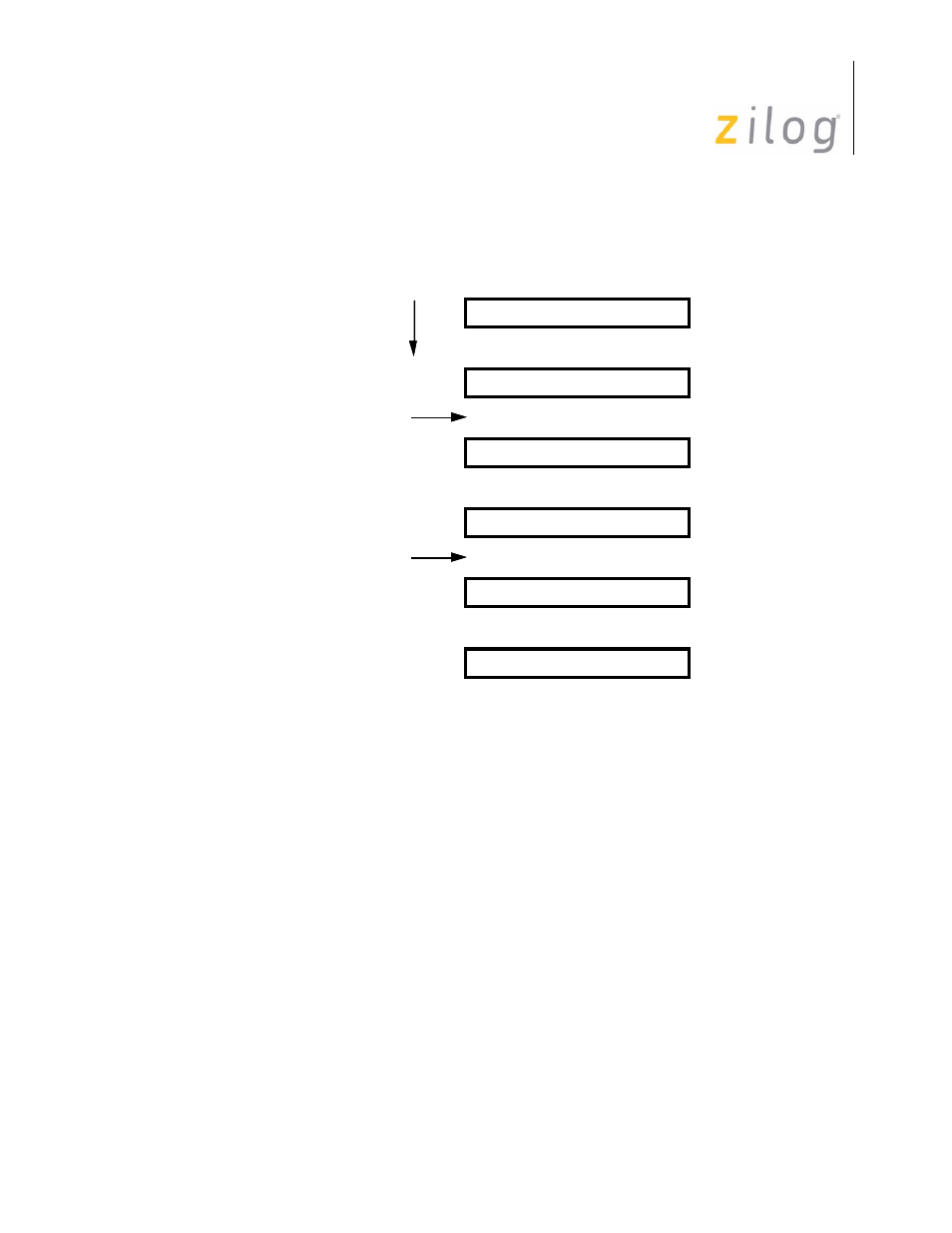Zilog Z16C35 User Manual
Page 82

ISCC
User Manual
UM011002-0808
76
Figure 4–28. Changing Character Length
Most bit-oriented protocols allow an arbitrary number of bits between opening and clos-
ing flags. The ISCC allows for this by providing three bits of Residue Code in RR1 that
indicates which bits in the last three bytes transferred fro the recieve data FIFO by the pro-
cessor are actually valid data bits (and not part of the frame check sequence or CRC).
Table 4-12 gives the meanings of the different codes for the four different character length
options. The valid data bits are right-justified, that is to say if the number of valid bits
given by the table is less than the character length, then the bits that are valid are the right-
most or least significant bits. It should also be noted that the Residue Code is only valid at
the time when the End of Frame bit in RR1 is set to 1.
6
5
4
3
2
1
Receive Data Buffer
7
8
11 10
9
8
7
6
12
13
19 18 17 16 15 14
20
21
27 26 25 24 23 22
28
29
32 31 30 29 28 27
33
34
37 36 35 34 33 32
38
39
Time
Change from Five to Eight
Change from Eight to Five
5 Bits
5 Bits
5 Bits
8 Bits
8 Bits
Page 76 of 316